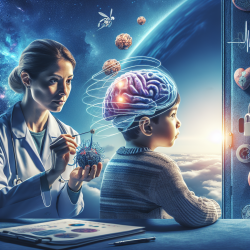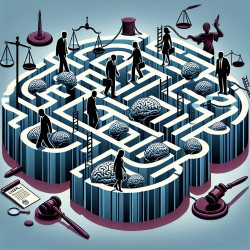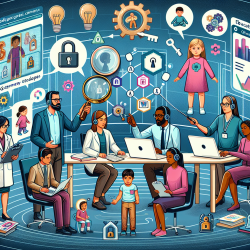Introduction: A New Era in Pediatric Therapy
In the realm of pediatric therapy, the quest for innovative approaches to treat brain injuries in children is unending. The recent research article, "Brain organoids for hypoxic-ischemic studies: from bench to bedside," opens a new chapter in this journey. This study introduces brain organoids as a groundbreaking tool to bridge the gap between animal models and human clinical trials, particularly in understanding hypoxic-ischemic (HI) brain injuries.
The Promise of Brain Organoids
Brain organoids are three-dimensional cultures derived from human pluripotent stem cells. They mimic the architecture and function of the human brain, providing a more accurate model for studying brain development and disorders. This technology is particularly promising for understanding HI brain injuries, which are a leading cause of neurological impairments in newborns, including cerebral palsy and cognitive developmental delays.
Implications for Pediatric Therapy
The application of brain organoids in HI studies has several implications for pediatric therapy:
- Enhanced Understanding: Organoids provide a platform to study the cellular and molecular mechanisms underlying HI injuries, offering insights into potential therapeutic targets.
- Personalized Medicine: By simulating individual genetic and environmental conditions, organoids pave the way for personalized therapeutic approaches tailored to each child's unique needs.
- Drug Development: Organoids can be used to test the efficacy and safety of new drugs, accelerating the development of treatments for HI-related conditions.
Challenges and Opportunities
While brain organoids offer exciting opportunities, there are challenges to overcome. The absence of a microvasculature network and the variability between organoid batches are significant hurdles. However, ongoing research is exploring solutions, such as co-culturing with endothelial cells to enhance vascularization.
Despite these challenges, the potential of brain organoids to transform pediatric therapy is immense. They offer a novel approach to understanding and treating HI injuries, promising better outcomes for children affected by these conditions.
Encouraging Further Research
For practitioners in the field of pediatric therapy, staying abreast of advancements in brain organoid research is crucial. Engaging with this research can enhance clinical practices and improve therapeutic outcomes. Practitioners are encouraged to explore the original research paper for a deeper understanding of the methodologies and findings.
To read the original research paper, please follow this link: Brain organoids for hypoxic-ischemic studies: from bench to bedside.










